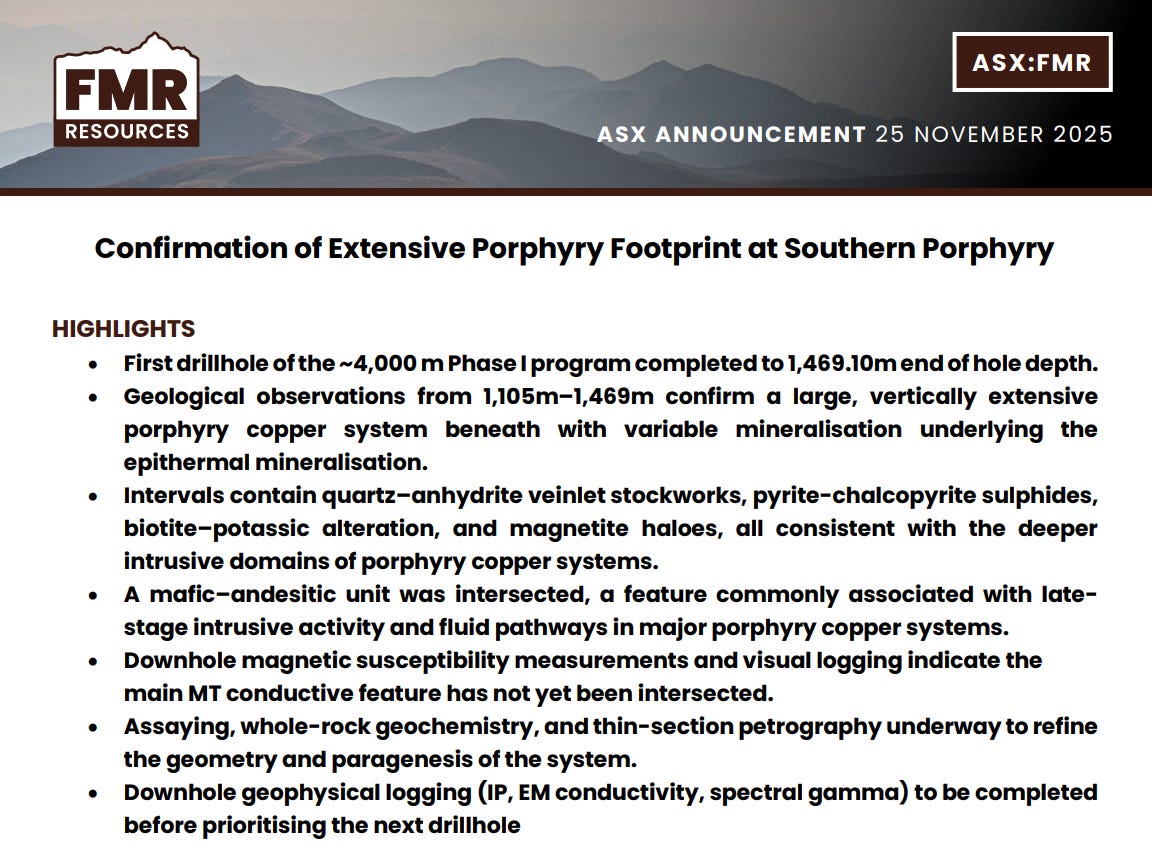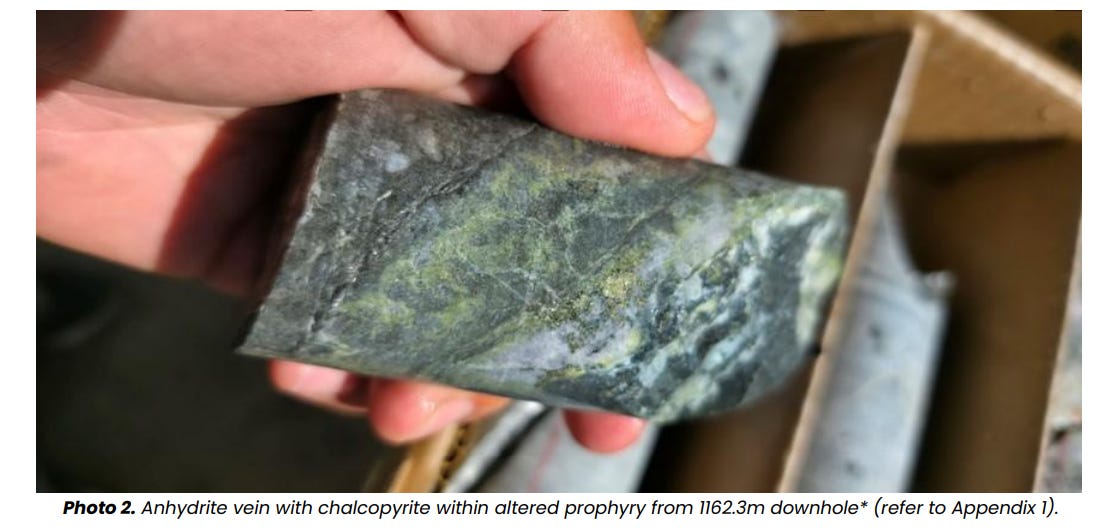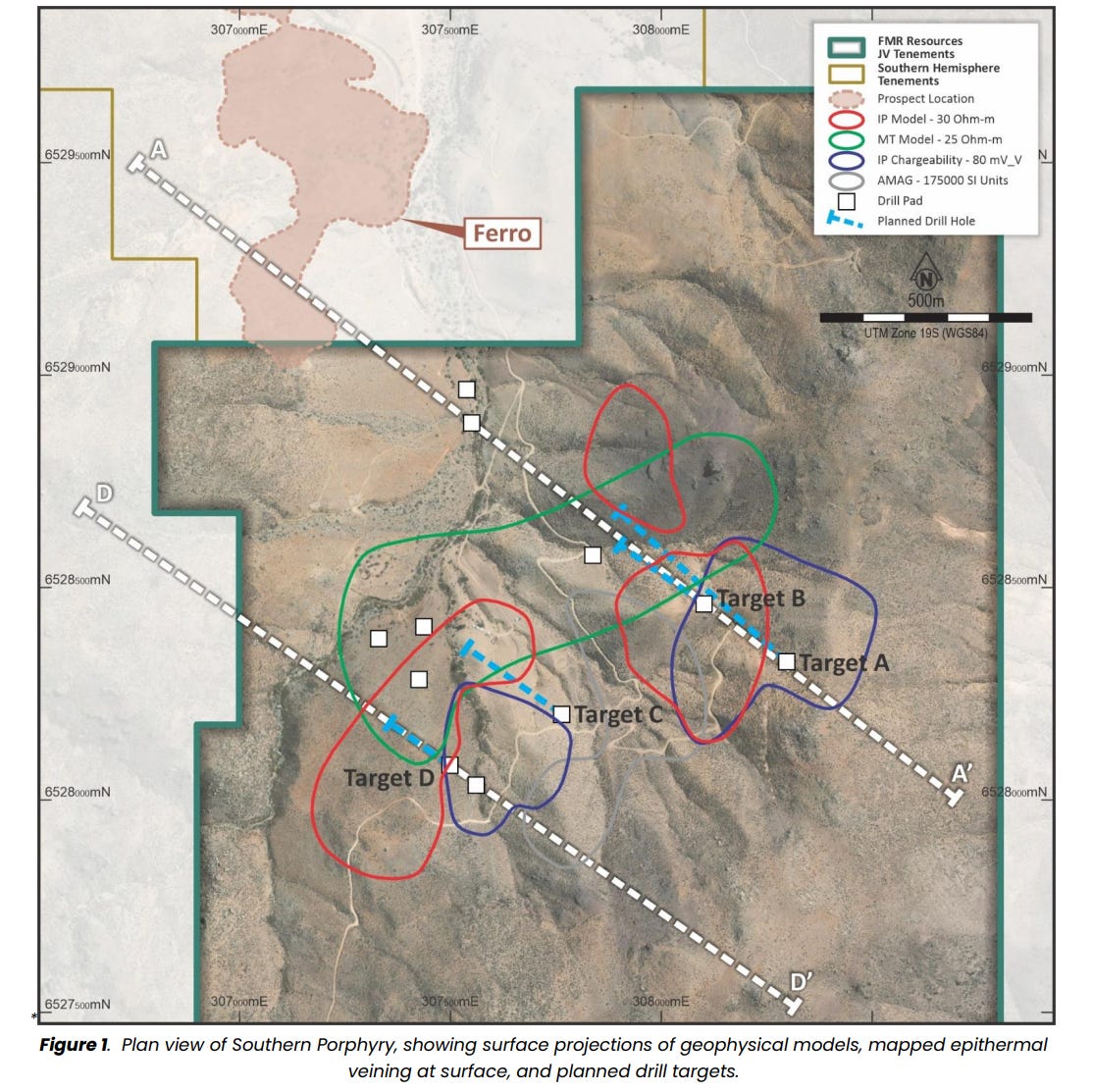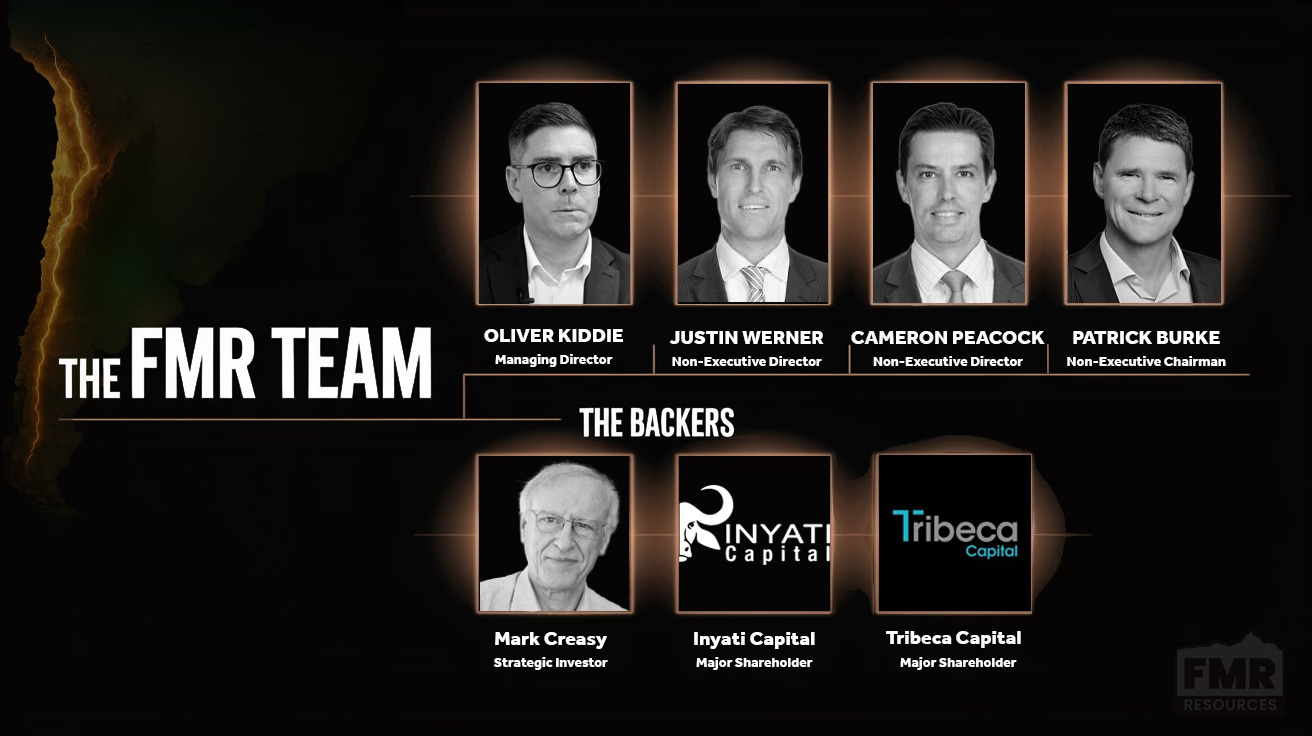FMR's First Hole Confirms the System, MT Target Still Ahead
Early drilling shows FMR is in the right neighbourhood, with the best targets still ahead.
Every big copper discovery tends to start the same way. You put a hole in the ground, cross your fingers, and more often than not the first hole just tells you where to head next rather than what you’ve already found. That’s pretty much where FMR Resources (ASX: FMR) sits today.
FMR has just completed its first deep hole at Southern Porphyry in Chile and they haven’t hit the core of the system yet. But the rocks and geophysics are lining up in a way that suggests they’re drilling in the right neighbourhood.
For anyone new to porphyry exploration, the centre of these systems can be notoriously hard to pinpoint. Even Escondida (now the world’s largest copper mine, also in Chile) took five holes before drilling the discovery zone. Writing off FMR after the first hole would be way off the mark.
Chile’s still the world’s best hunting ground for giant porphyries, and with copper demand climbing, the market knows these systems take time to prove up. Early on, the real question is whether the rocks look like they belong to a big mineral system.
In this case, they do.
While the main MT source remains untested, the overall geological and downhole geophysical data reinforce that we are drilling within a mineralised intrusive corridor.
- Managing Director, Oliver Kiddie
We now know there is a large porphyry system beneath the shallow epithermal zone. Crucially, the main MT target, the feature most likely to hold the copper shell, remains completely untested.
FMR hasn’t touched it yet - their first hole skimmed the edge. The copper they’re seeing shows up where the MT model predicted, which is a good sign the targeting is on track. The next round of data should tell them how to hit it.
FMR is in our portfolio, so we’ve got skin in the game. At 33c, roughly a $17M market cap, and more than $6M in the bank, we’re still bullish. This is a well-led team with serious backers and we’re still backing them in.
Early results justify giving the system a proper crack. And we won’t have to wait long.
Breaking Down a Very Technical Announcement
Today’s announcement from FMR is one of the more technical updates they’ve released. For anyone without a geology background it can feel a bit dense, which is why we’ve pulled out the bits that matter and put them into plain English.
The MT target is a large electrical feature deep underground that lights up hard in the geophysical modelling.
These signals often mark the centre of a porphyry system, where the stronger copper zones can sit. Because it remains untested, the real prize is still ahead of the drill bit.
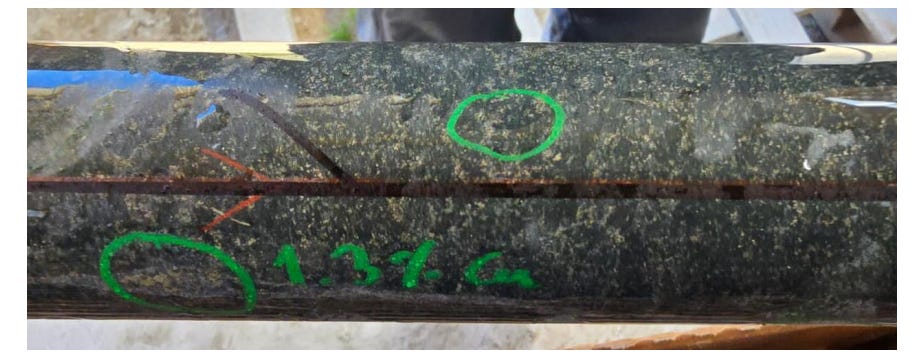
But geophysical features this big don’t show up for no reason. Something substantial down there is generating that MT anomaly, and Phase I is about putting a drill into whatever’s causing it.
The first hole confirmed the rocks above and around the MT feature look the way they should when you’re drilling the outer edges of a major porphyry.
As the hole went deeper, the rocks showed more alteration, more sulphides, and hotter intrusive units. All changes that tell you you’re heading towards the engine room of a large copper system.
It doesn’t prove a discovery, but it does confirm the system is real, large, and worth chasing with the next round of drilling.
Which brings us to what the drill core actually revealed.
What the Drill Core Actually Showed and Why It Matters
Below 1,100 metres the rocks shifted in a way you see when you’re approaching the engine room of a copper system.
Below that point the core changed - alteration strengthened, the veining became more involved, and the intrusions started looking like the pathways that carry heat and fluids through large porphyries. These are the early signs you want when you’re moving toward the part of the system where copper can pool.
The company also noted that downhole geophysics shows they’re still outside the main MT conductor. That’s the deeper intrusive zone that could host the copper shell, and the fact it hasn’t been touched means the best part of the system remains ahead.
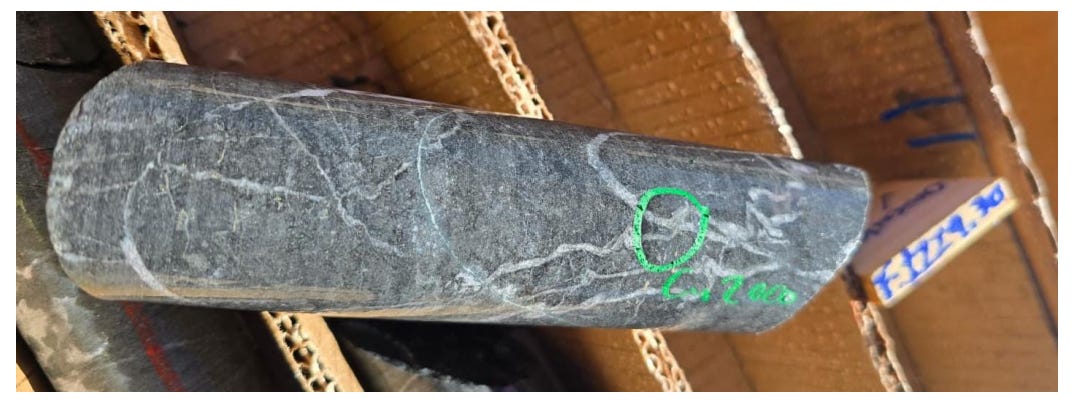
For anyone wanting the technical breakdown, we’ve put together a simple list of what the team saw in the core, and why it matters.
Potassic and biotite alteration
This type of alteration shows up when you are moving into hotter, deeper parts of a porphyry. It is like a temperature shift underground. When it appears, it tells you the rocks are getting closer to the heat source that can host copper mineralisation.
Magnetite haloes
These magnetic signatures often form around intrusive bodies. Breadcrumbs in the rock that tell geologists they’re heading closer to the centre of the system rather than away from it.
Quartz and anhydrite veinlets with pyrite and chalcopyrite
These are one of the classic signs you look for. Chalcopyrite is the main copper sulphide. Even a tiny bit matters early on because it proves the system is carrying copper-bearing fluids. The point isn’t the grade, it’s the style. These are the right types of veins in the right kind of rocks.
Stockwork veining
This is where a rock starts filling with lots of small intersecting veins, forming a network. Large porphyry deposits usually sit beneath or beside big stockwork zones. When these patterns increase with depth, you’re moving in the right direction.
Mafic and andesitic intrusives
These units are the feeder pathways in big copper systems. Their presence suggests the fluids and heat that formed the porphyry have moved through this area. It’s exactly what you want to see when you’re hunting the heart of the system.
Next Steps and Why the Discovery Case Remains Alive
FMR will now run downhole tests that let them see what the rocks look like beyond the core itself.
These tests measure how the rocks react to electrical currents and natural radiation. Combined, they sharpen the 3D picture of the system and help the team work out where the next hole should go.
Once that data comes in, the focus shifts to the second and third drillholes. Targets C and D are already marked out and sit closer to the big MT feature.
These holes will target the deeper intrusive zone that could hold the copper body they’re after.
FMR hasn’t missed anything. They’ve confirmed they’re inside a large mineral system and now have a clearer path for the holes that matter most. Phase I was always planned as multiple holes, not a single swing.
The management team has built this program step by step, mapping the geology, refining the targets, and using each hole to zero in on the core. That’s how you hunt for a major porphyry - methodically, with each hole informing the next.
Major porphyry discoveries rarely happen on hole one. They take patience and proper planning. FMR is now moving into the part of the program where things get interesting.
Closing in on the Target
FMR’s first deep hole at Southern Porphyry did what first holes do - proved the system is real, extensive, and mineralised. The core target remains untested ahead of them.
The signs justify keeping going, and with $6M in the bank, they’ve got the runway to do it properly.
The groundwork’s done. Now the next holes will tell the real story.



